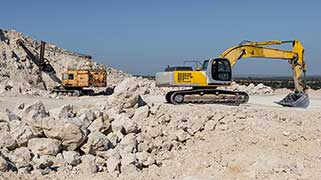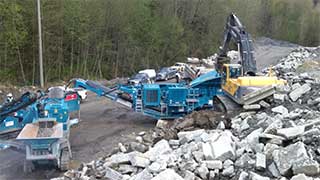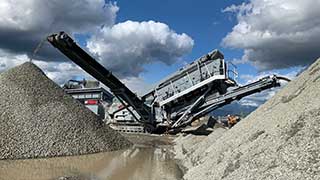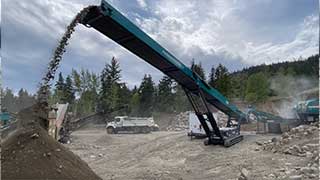How Are Construction Aggregates Made?
The production of construction aggregates involves several key steps:
 Extraction: Aggregates are typically surface mined from natural deposits such as riverbeds, quarries, or pits. Excavators, loaders, and other heavy machinery are used to extract the material.
Extraction: Aggregates are typically surface mined from natural deposits such as riverbeds, quarries, or pits. Excavators, loaders, and other heavy machinery are used to extract the material.
 Crushing: The extracted material is transported to a processing facility, where crushers break down large rocks into smaller, more manageable sizes.
Crushing: The extracted material is transported to a processing facility, where crushers break down large rocks into smaller, more manageable sizes.
 Screening and Washing: After crushing, the aggregates are screened to separate them by size. They may also be washed to remove any remaining impurities or fine particles.
Screening and Washing: After crushing, the aggregates are screened to separate them by size. They may also be washed to remove any remaining impurities or fine particles.
 Sorting and Storage: Finally, the aggregates are sorted by size and stored in stockpiles until they are ready for use in construction projects.
Sorting and Storage: Finally, the aggregates are sorted by size and stored in stockpiles until they are ready for use in construction projects.
The Unsung Heroes of Construction
Construction aggregates are the backbone of modern infrastructure, quietly supporting the homes, schools, roads, and bridges that form the fabric of our daily lives. Though often overlooked, these materials are essential to the strength, stability, and durability of the structures we rely on. As our world continues to grow and develop, the demand for high-quality aggregates will only increase, making it more important than ever to understand their value and ensure their sustainable use. By recognizing the critical role aggregates play, we can better appreciate the foundations of the world around us and work towards building a future that is both resilient and resourceful.
